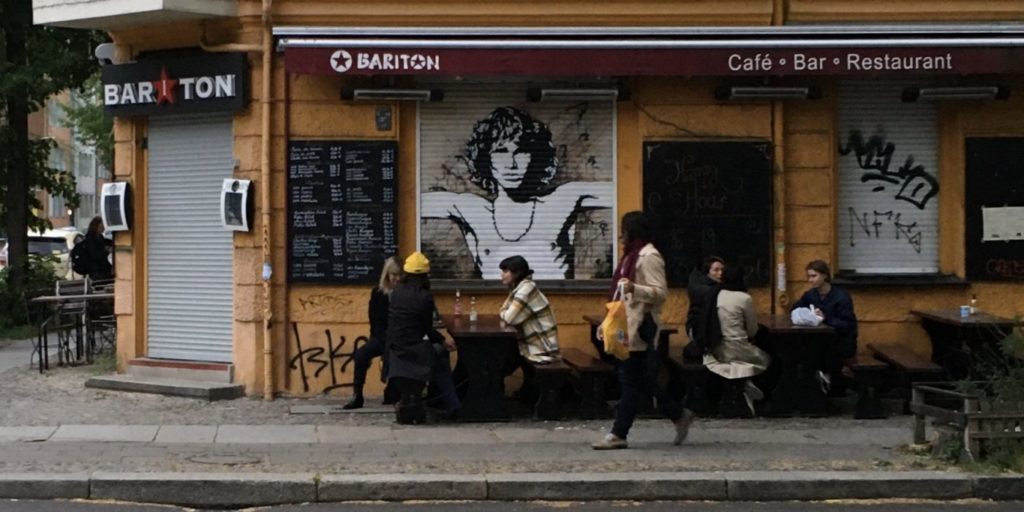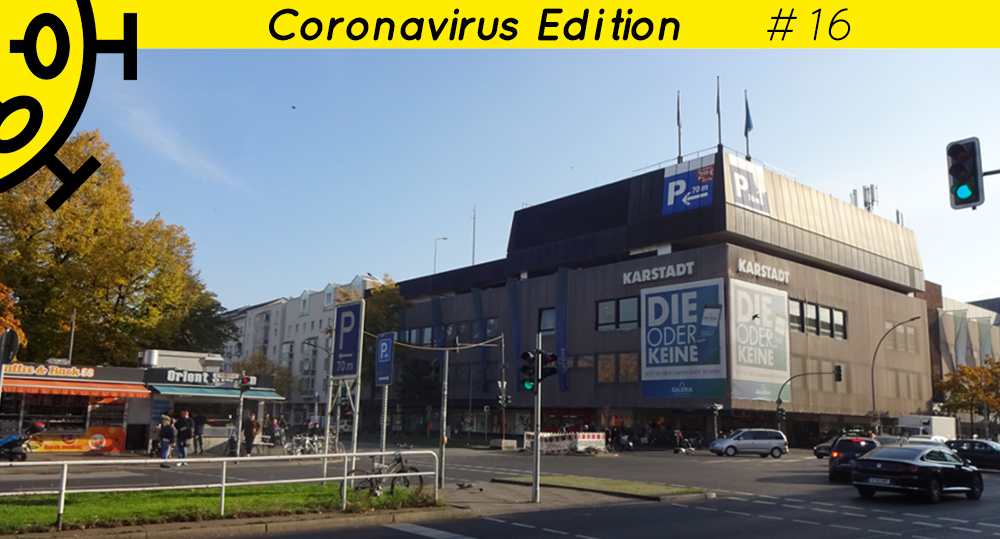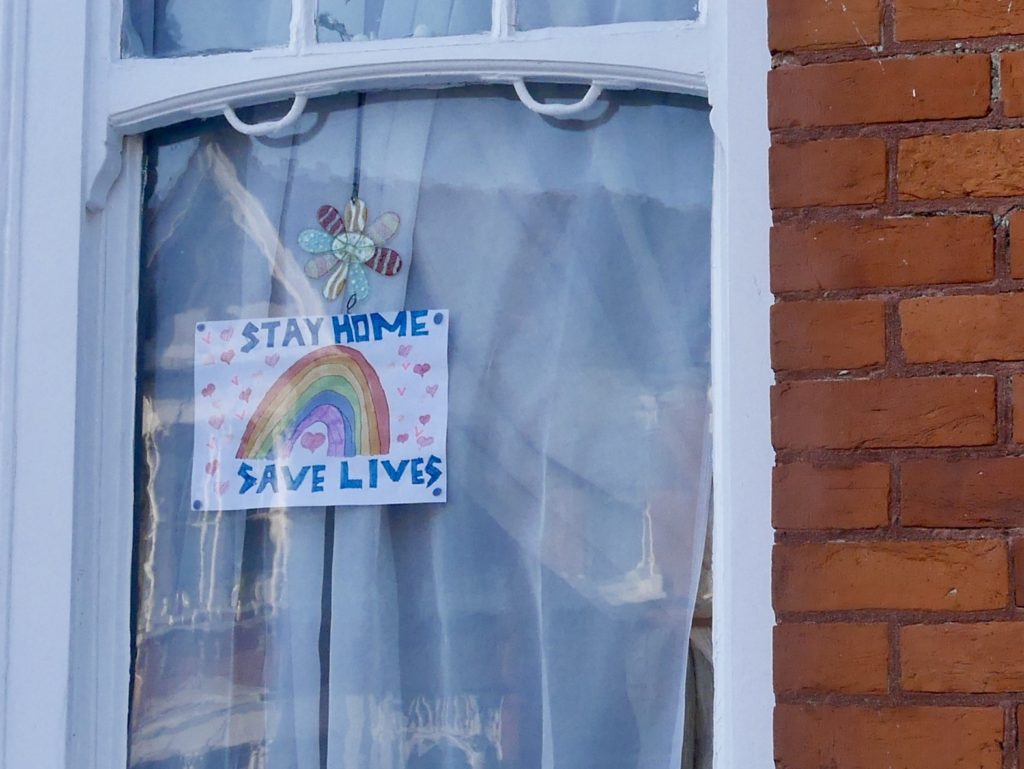Who took part in the first survey in 2019 and where was it conducted?
We conducted a household survey in spring 2019 as part of the research project entitled "The World Down My Street". We spoke to 568 participants from across four Berlin neighborhoods. We would like to take this opportunity to once again thank all those who took part in that first survey!
Read more ...We renamed the four Berlin neighborhoods Apolda Springs (neighborhood on the eastern outskirts of the city), Borkum Rock (inner-city neighborhood in the west), Coswig Gardens (inner-city neighborhood in the east), and Dorsten Heights (neighborhood on the western outskirts of the city). These fictional, made-up names were chosen in order to preserve the anonymity of the neighborhoods in question. As such, we wanted to prevent any opinions of certain neighborhoods from overshadowing everything. Instead, we wanted to know which opportunities (for overcoming challenges) in the respective neighborhood were important in everyday life and for whom, and we also wanted to find out for whom these resulted in advantages and disadvantages.
What did we investigate in 2019?
You can read some of the responses to these questions in the following sections. We will also explain why the current survey on the coronavirus crisis is important and expands on the previous findings.
How did respondents deal with everyday challenges in 2019?
How did people talk about their challenges?
Despite the fact that many people own a smartphone these days, according to our survey just under 80% of all important conversations relating to support regarding challenges were held face to face.
Read more ...Where did people talk about their challenges?
Another finding concerns the question of where people got social support when faced with challenges. You might assume that challenges are predominantly dealt with in people's own households, but that is not the case. Only 35% of our respondents were exclusively at home when they discussed their problems with other people. In the broadest sense, our respondents were out and about all over the city or even traveling the world when they received support regarding their challenges.
Read more ...How important was the neighborhood in terms of finding social support? Only 25% of respondents exchanged social support within their neighborhood. 85% of those who left their home and received support stayed in Berlin, and 75% left their own neighborhood.
Who did people talk to about their challenges?
The majority of our respondents spoke most frequently with good friends about their challenges (40%). This was followed by members of their immediate family (26%), and partners (15%). Professional contacts (such as doctors, social workers or teachers) (8%), work colleagues (5%), casual acquaintances (4%), and the extended family (2%) were less likely to be the people with whom challenges were discussed.
Read more ...Why the survey amidst the COVID-19 crisis?
The findings from the project entitled "The World Down My Street" enabled us to demonstrate that prior to COVID-19 it was important for people to discuss their challenges face to face. Our respondents found that type of interaction more helpful. They often exchanged support with good friends but also with family members, professional contacts, or work colleagues. They received that support most frequently outside of their homes, for example in restaurants or cafés or at work.
How did Berlin residents manage to deal with the fact that the city and their everyday lives suddenly changed on account of the lockdown and the restrictions imposed in terms of contact?
The findings from the surveys conducted in spring 2019 and late summer and fall 2020 allow us to demonstrate which people experienced changes in their everyday lives in Berlin. You can read more about this in the following sections. We will show, for example, how Berlin residents managed to deal with the fact that clubs, bars, restaurants, schools, and support facilities were closed and the fact that many get-togethers with other people were no longer allowed to take place face to face.
Findings of the 2020 COVID-19 survey
Just because we have to do it, it doesn't mean it is right: why #stayathome should not become a moral imperative and social isolation not a habituation
6. May 2020

Talja Blokland, Daniela Krüger and Robert Vief examine the restrictions, due to the coronavirus, currently being imposed on people's opportunities to receive social support. They argue that the political measures used to contain the spread of the virus are regulating the ways in which people interact and communicate with each other. Based on representative survey findings from four different neighborhoods of Berlin they demonstrate that one year ago (1) the majority of the respondents addressed their most pressing issues by means of face-to-face communication – and, in the majority of cases, outside of their homes; and that (2) reducing contact to digital exchanges is associated with high costs to their wellbeing and cannot replace meeting up in person.
More than jobs and making money
21. December 2020

The Corona-lockdown has severely affected retail, as economic analysts show. Whether true or not, the Berlin department stores of Karstadt seemed to use the lockdown to explain its crisis when its planned closures made the news in October 2020. The debate after Karstadt's announcement of closures on the need to save the department stores from disappearing was narrowly economic. The debate on its apparent causes – lockdown and home-shopping – appears scant, as if digitalization is something we just live with. So, when we can buy all that we need online – and much more as the Algorithm will propose whatever else we 'need' – why bother saving a department store? How may such stores and surrounding shopping streets matter for our social life? Does it matter all that much when, along with home-office, we'll be doing more home shopping?
Leaving the house to talk in private. How COVID19 restrictions affected how and where we find someone to talk to.
21. December 2020

Talja Blokland, Robert Vief and Daniela Krüger compare data from a survey of residents of four neighborhoods in Berlin before and after the first lockdown. The findings show how the restrictions have affected people's behavior: Before the lockdown, the majority of the respondents discussed their most pressing personal challenges face to face outside of their homes. Under the COVID-19 restrictions, digital means of communication became more important – but strangely enough they did not get us to stay at home.
